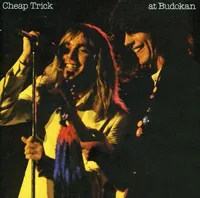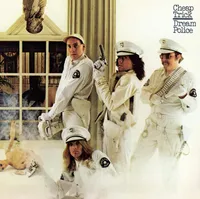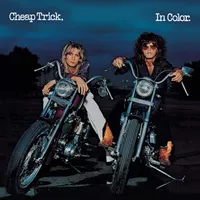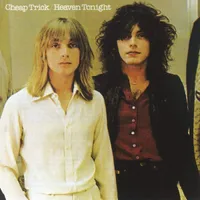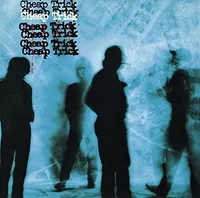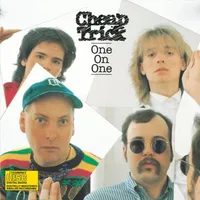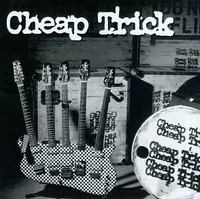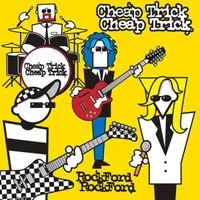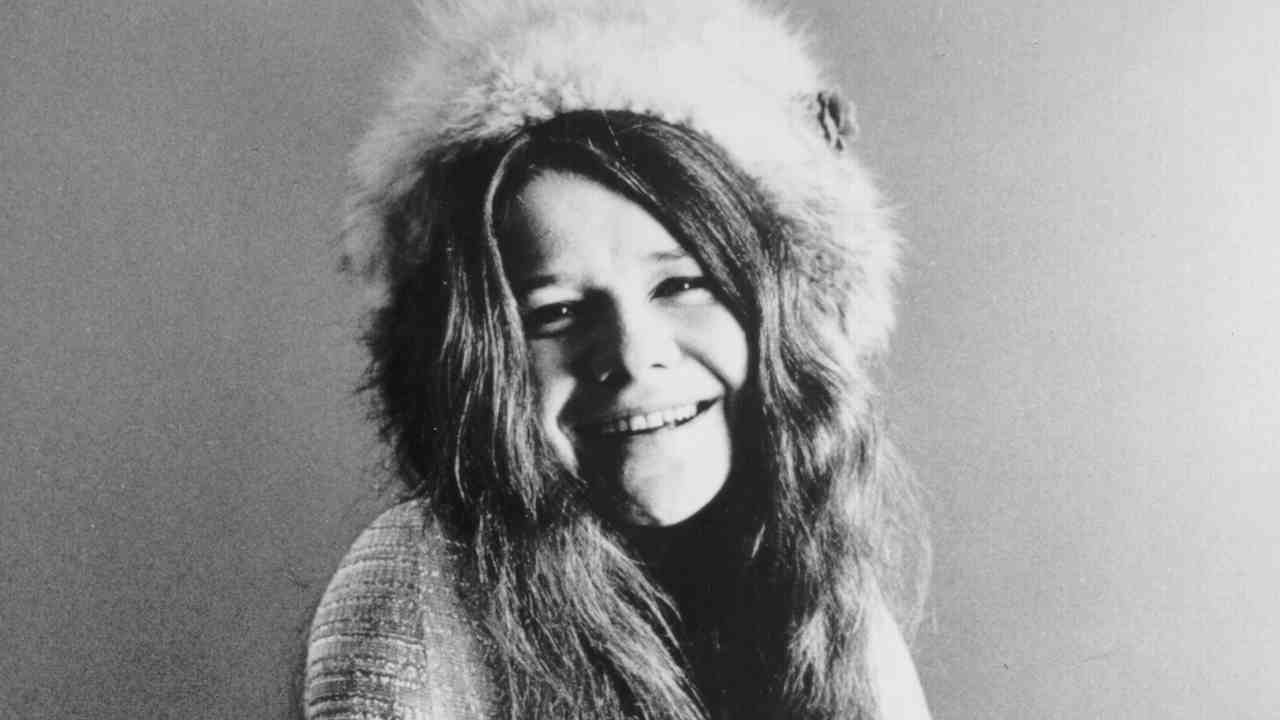"If memorable hooks were an offence they'd have been locked up with no chance of parole": The Cheap Trick albums you should definitely listen to
With a pair of pretty boys and a pair of geeks and some glorious songs, Cheap Trick once ruled the pop-rock world

Blame The Beatles. Without the loveable moptops there would never have been a Cheap Trick – and without the band from Rockford, Illinois, what we now call pop-rock probably would have been a very different animal too. Blessed with an innate sense of melody and an irreverent sense of buffoonery, Cheap Trick were almost seen as punk rock, certainly when compared to the AOR behemoths who dominated the US charts in the 1970s.
Seriously, Cheap Trick were prepared to take the piss out of themselves and everyone else, while crafting songs so hummable that if writing memorable hooks were an offence they’d have been locked up with no chance of parole. It started in 1968 with the band Fuse, with guitarist Rick Nielsen (very much the main songwriter) and bassist Tom Petersson. One album for Epic proved unsuccessful, as did a name change to Sick Man Of Europe and a relocation to Philadelphia. By 1973 they’d become Cheap Trick, adding drummer Bun E. Carlos and vocalist Randy Hogan. The latter didn’t stay long, ousted in favour of Robin Zander.
Three albums – 1977’s self titled debut and In Color, plus Heaven Tonight the following year – enjoyed modest success, but it was 1979’s At Budokan live album that hit the commercial jackpot, turning Cheap Trick into a major force on the American chart and also giving them a global reputation. Moreover, it helped that they had a distinctive image, which was the sum of two duos: Zander and Petersson were the pretty boys; Nielsen and Carlos were the wacky looking pair.
By the end of the 70s, Cheap Trick had racked up hits like I Want You To Want Me, Dream Police, Surrender and Voices. But the 1980s were frustrating. Petersson quit in 1980 to start an ill-fated band, Another Language, with his wife. He was replaced in Cheap Trick by Jon Brant, but despite the occasional gem the band went into a steep decline. Petersson returned in 1988, heralding a swift change in the band’s fortunes as The Flame became a No.1 hit for them, while the album from which it was taken – Lap Of Luxury – was their first in a decade to sell more than a million copies.

Like Kiss with Alive!, and Peter Frampton with Frampton Comes Alive, Cheap Trick’s career was effectively launched by an era-defining ‘best-of-the-band-so-far’ live album. Recorded at the legendary Tokyo venue, the vitality and melodic might of the band were astonishing.
The performance brought out the best in songs that had hitherto failed to make their mark; suddenly everyone wanted to know about Clock Strikes Ten, Surrender, I Want You To Want Me. To this day, the combination of brilliant, simple tunes, confident musicianship and crowd hysteria on At Budokan is a reminder as to why Cheap Trick are among the elite artists in hard rock history.
It’s as if the success of At Budokan lit the blue touch paper. After being propelled from semi-obscurity to international acclaim, the band found another gear or two for Dream Police.
If what had gone before suggested potential, then this was the record where it all coalesced beatifically in the studio. Some of the lyricism was downright surreal (a Nielsen trademark) and the production was redolent of Meat Loaf’s Bat Out Of Hell or Queen’s A Night At The Opera, but through it all shone those great songs. The title track, Voices and Need Your Love proved that Britain might have had The Police, but Americans dared to Dream.
Rakish and determined to find a true path, on their second album Cheap Trick found a formula that was to prove irresistible within a couple of years. While their debut might have been too close to The Beatles, or even the Electric Light Orchestra, with In Color Cheap Trick were definitely a band standing apart from the sum of those influences.
Tom Werman’s polished production set a tone that allowed the band to compete on an international level. And there are enough strong songs on this album to make it a landmark release. From Southern Girls to Clock Strikes Ten, I Want You To Want Me to Hello There, it’s a record that has got the right chops.
The third album from Cheap Trick, Heaven Tonight suffered slightly from lacking the cohesion of its predecessor, In Color. Nonetheless, it still had enough charm and quality to leave people scratching their heads and wondering why Cheap Trick were still lagging behind the likes of Foreigner and REO Speedwagon.
Interestingly, producer Tom Werman seemed to believe that the best way to get the best out of the band was to give them their head – something he avoided on the smoother In Color. The latter approach may have actually proved more beneficial on songs like Surrender, California (a rousing cover of the Move classic) and Auf Wiedersehen.
The album that not only marked the end of an era, but also the album when Cheap Trick felt confident enough about their own reputation to work with the Beatles producer George Martin.
At the time, it was dismissed as a bad mistake, best consigned to the dumper. But now… well, it sounds like a record that was unfairly treated. Listen to the way Martin extrapolates the band’s strengths, rather than trying to give them the magic touch he applied to the Fab Four. There’s a maturity on the record that should have been allowed to develop, but the subsequent loss of Petersson, and the comparative commercial dip, panicked too many.
In a decade when Cheap Trick allowed their usually high standards to drop alarmingly, 1985’s Standing On The Edge was a rare exception. Moreover, it’s good enough to stand up against much of their 70s records.
Back working with producer Jack Douglas (whom they worked with on their self-titled debut), the group rediscovered their hard edge, something that gave the songs a genuine lift. In reality, after fighting for a reason to exist, here the band simply gave in to their instincts – and if there had been a little more belief at the label, then the likes of Tonight It’s You would have reinvented Cheap Trick for the MTV generation.
The band’s first album after Tom Petersson left and new bassist Jon Brant was brought in to replace him. Cleverly, they went for a much more straight-ahead, singalong approach, compared to the previous All Shook Up. And while it isn’t as good as the fineries Cheap Trick had recorded in the 70s, nonetheless minor hits If You Want My Love and She’s Tight proved that the band were still capable of delivering right on the mark.
Unfortunately, there was a lack of real consistency, which perhaps indicated that Cheap Trick were on the wane. And Roy Thomas Baker’s production lacked the necessary sparkle to bring out the best in the material.
Having freed themselves of major-label shenanigans, against the odds this was Cheap Trick’s best album for more than 10 years. And with it they were determined to prove that there was more to the band than nostalgia.
Song-wise, there isn’t anything here that can match the glories of their 70s material, but there was enough to convince sceptics that, as the millennium ended, Cheap Trick still had a purpose. Unfortunately the label went bust just three weeks after the album’s release, scuppering any real hopes for it. As well as having the same title as their debut, the album cover was similar too. Hope for a rebirth in a new era.
While so many of their contemporaries made the mistake of trying to stay in the past or modernise their sound unconvincingly, Cheap Trick found the right balance.
Rockford (the title shared the name of their home town) had enough Trick trademarks to make it unmistakable, but it is also built for the 21st century. Unlike their self-titled album of 1997, Rockford actually had a number of more-than-decent songs, especially Perfect Stranger, If It Takes A Lifetime and Give It Away. Very much a return to basics, the record proved that guitarist Rick Nielsen especially could still pull out a masterstroke or three from his contorted brain. A Cheap Trick renaissance had begun.
...and one to avoid
You can trust Louder
Oh, good grief! No, no, no. While there have been some less-than-inspirational moments throughout Cheap Trick’s 30-plus-year career, nothing dipped as low as this mess. Quite what they were trying to do is lost in a swirl of songs so poorly conceived that the band probably had to down gallons of moonshine just to face having to record these moronic pastiches.
Ted Templeman’s production seemed bored and boring, and the band’s performances sound as if they couldn’t wait to get the first plane out of town and forget about the whole sorry experience. What went wrong? Everything. Put it down to the planets being wrongly aligned.
This feature originally appeared in Classic Rock 103, published in March 2007.
Sign up below to get the latest from Classic Rock, plus exclusive special offers, direct to your inbox!
Malcolm Dome had an illustrious and celebrated career which stretched back to working for Record Mirror magazine in the late 70s and Metal Fury in the early 80s before joining Kerrang! at its launch in 1981. His first book, Encyclopedia Metallica, published in 1981, may have been the inspiration for the name of a certain band formed that same year. Dome is also credited with inventing the term "thrash metal" while writing about the Anthrax song Metal Thrashing Mad in 1984. With the launch of Classic Rock magazine in 1998 he became involved with that title, sister magazine Metal Hammer, and was a contributor to Prog magazine since its inception in 2009. He died in 2021.
